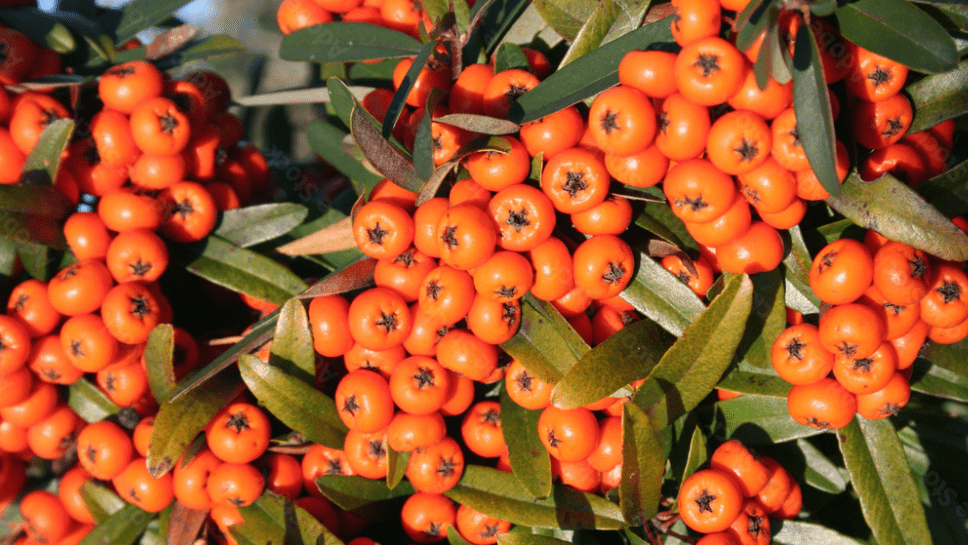
Orange Berries on a Bush: Tips for Planting and Care
Orange berries on a bush can add a striking visual appeal to any garden. These vibrant berries not only enhance the aesthetic value of your landscape but also attract wildlife such as birds. If you’re looking to incorporate plants with orange berries into your garden, it’s essential to know how to plant and care for them to ensure their health and beauty.
Table of Contents
ToggleUnderstanding Orange Berry Bushes
A. Types of Bushes with Orange Berries
There are a few different types of bushes that produce orange berries, including the winterberry, beautyberry, and Oregon grape. Each type has its own unique characteristics and growing requirements, so it’s important to choose the right variety for your specific garden environment.
1. Overview of popular varieties (e.g., Firethorn (Pyracantha), Sea Buckthorn, Winterberry)
When it comes to planting and caring for orange berries on a bush, there are a few popular varieties to consider. Firethorn, also known as Pyracantha, is a popular choice with its beautiful orange berries and evergreen foliage. Sea Buckthorn is another great option, known for its nutritional berries and hardy nature. Winterberry is a native shrub that produces bright orange berries in the fall and winter, adding a pop of color to the landscape. Each of these varieties has its own unique characteristics and growing requirements, so it’s important to choose the right one for your specific garden environment. Selecting the right variety will ensure that your orange berries thrive and add beauty and vibrancy to your outdoor space.
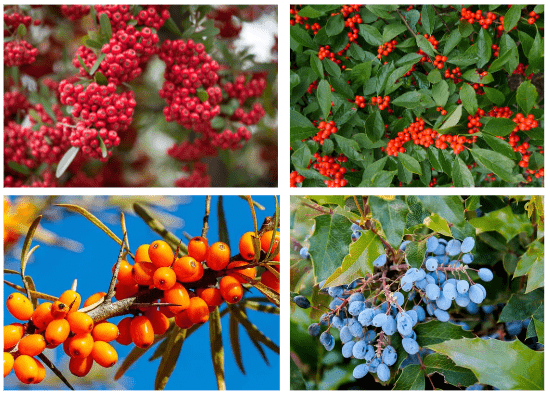
B. Benefits of Growing Orange Berry Bushes
There are several benefits to growing orange berry bushes in your garden. In addition to adding a pop of color to your landscape, these bushes provide food and habitat for wildlife, such as birds and insects. Many varieties also offer year-round interest, with colorful berries in the fall and winter. Some orange berry bushes, like Sea Buckthorn, also have nutritional benefits, providing a source of vitamin C and other nutrients. Additionally, these bushes are generally low maintenance and can tolerate a range of soil and growing conditions, making them a versatile and attractive addition to any garden.
Selecting the Right Bush for Your Garden
A. Climate and Hardiness Zones
When selecting the right orange berry bush for your garden, it is important to consider the climate and hardiness zones in your area. Certain varieties of orange berry bushes thrive in specific climates and are more tolerant of extreme temperatures. It is important to choose a variety that is well-suited to your region to ensure that it will thrive and add beauty and vibrancy to your outdoor space. By considering the climate and hardiness zones, you can select the perfect variety of orange berry bushes to enhance your garden.
B. Site Selection
When choosing a site for your orange berry bush, it is important to consider the amount of sunlight, soil type, and drainage. Most orange berry bushes prefer full sun, well-drained soil, and can tolerate a variety of soil types. It is also important to consider the size of the bush at maturity and ensure that there is enough space for it to grow and spread. By carefully selecting the site for your orange berry bush, you can ensure that it will thrive and enhance the beauty of your garden.
C. Choosing Healthy Plants
When choosing orange berry bushes for your garden, it is important to select healthy plants that are free of any signs of disease or pests. Look for plants with strong, sturdy stems and vibrant, green leaves. Avoid plants that have discolored or wilting leaves, as these may be signs of stress or disease. Additionally, check the roots of the plant to ensure they are white and healthy, rather than dark or mushy. By choosing healthy plants, you can ensure the success of your orange berry bushes in your garden.
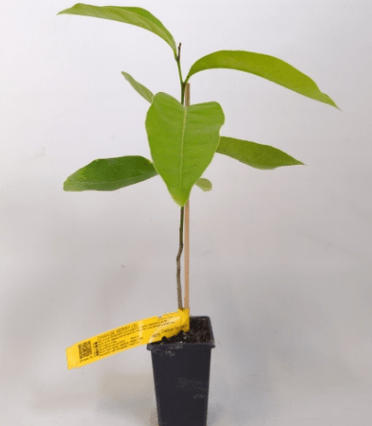
Planting Orange Berry Bushes
A. Soil Preparation
When planting orange berry bushes, it is important to prepare the soil properly to provide the best growing conditions for the plants. Start by testing the soil to determine its pH level and nutrient content. Orange berry bushes thrive in well-draining, slightly acidic soil with a pH level between 5.5 and 6.5.
Before planting, amend the soil with organic matter such as compost or peat moss to improve its texture and fertility. It is also important to ensure that the soil is free of weeds and rocks that could impede the growth of the plants.
By properly preparing the soil and planting the orange berry bushes correctly, you can promote healthy growth and a successful harvest in your garden.
B. Planting Techniques
When planting orange berry bushes, it is important to follow proper planting techniques to ensure the best chances for successful growth. Start by digging a hole that is twice as wide and just as deep as the plant’s root ball. This will allow the roots to spread out and establish themselves more easily. Place the plant in the hole, making sure that the soil level is the same as it was in the nursery container. Backfill the hole with the amended soil, pressing it down gently as you go to remove any air pockets. Water the plant thoroughly after planting to help settle the soil around the roots. It is also important to mulch around the base of the plant to help retain moisture and suppress weed growth. By following these planting techniques, you can give your orange berry bushes the best chance for healthy growth and a bountiful harvest.
C. Transplanting Tips
When transplanting orange berry bushes, it’s important to ensure that the roots can spread out and establish themselves easily. Place the plant in the hole at the same soil level as it was in the nursery container, and backfill the hole with amended soil, gently pressing it down to remove air pockets. After planting, water the plant thoroughly to help settle the soil around the roots. Mulching around the base of the plant can help retain moisture and suppress weed growth. Following these planting techniques will give your orange berry bushes the best chance for healthy growth and a bountiful harvest.
Caring for Orange Berry Bushes
A. Watering Requirements
Orange berry bushes prefer well-drained soil and should be watered regularly, especially during dry periods. It’s important to keep the soil consistently moist, but not waterlogged. Watering early in the day is best to avoid evaporation and to allow the foliage to dry before evening, reducing the risk of disease. Be sure to water deeply to encourage strong root growth. Observing the plant’s leaves can also help determine if it needs more water – wilting or browning leaves may indicate a need for more water. Overall, staying attentive to the plant’s water needs will ensure healthy growth and a plentiful harvest.
B. Fertilization
Orange berry bushes benefit from regular fertilization to promote healthy growth and fruit production. It’s best to fertilize in the early spring before new growth appears, and then again in the summer to support fruit development. A balanced fertilizer with equal parts nitrogen, phosphorus, and potassium is recommended. Be sure to follow the instructions on the fertilizer label and avoid over-fertilizing, as this can harm the plant. Additionally, organic fertilizers or compost can be used to provide nutrients in a natural and sustainable way. Regular fertilization will help ensure a bountiful harvest of delicious and nutritious berries.
C. Pruning and Training
Pruning and training your orange berry bushes is essential for maintaining their health and promoting optimal fruit production. Pruning should be done in the late winter or early spring before new growth begins. Remove any dead, damaged, or diseased branches, as well as any that are crossing or rubbing against each other. This will improve air circulation and sunlight penetration, reducing the risk of disease and promoting better fruiting.
Additionally, training your berry bushes to a trellis or support system can help keep them upright and make it easier to harvest the fruit. Use soft ties to gently secure the branches to the support structure, allowing them to grow in a more controlled and manageable way.
By regularly pruning and training your orange berry bushes, you can help ensure they remain healthy and productive for years to come.
Protecting Your Bushes
A. Pest and Disease Control
1. Common pests (e.g., aphids, scale insects) and natural control methods
There are several common pests that can affect orange berry bushes, such as aphids and scale insects. To control these pests, you can use natural methods such as introducing beneficial insects like ladybugs or lacewings that feed on these pests. You can also use insecticidal soaps or neem oil as a natural and effective way to control pests without harming the plants or the environment. Additionally, practicing good garden hygiene, such as removing any fallen leaves or debris around the bushes, can help reduce the risk of pest infestations.
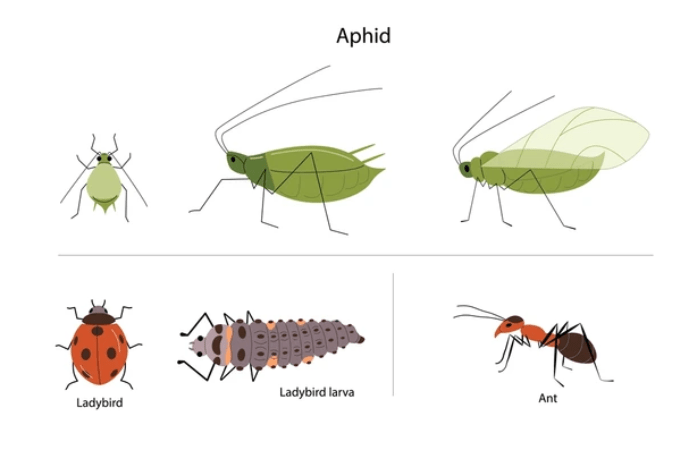
2. Identifying and treating diseases (e.g., fungal infections)
Orange berry bushes are susceptible to various fungal infections, such as powdery mildew and anthracnose. To identify and treat these diseases, it’s important to regularly inspect your bushes for any signs of discoloration, wilting, or abnormal growth. If you notice any symptoms of a fungal infection, you can apply a fungicide specifically designed for fruit-bearing plants. Additionally, promoting good air circulation around the bushes by proper pruning and spacing can help prevent fungal infections. It’s also important to remove and dispose of any infected plant material to prevent the spread of the disease. Regularly monitoring the health of your orange berry bushes and taking proactive measures can help protect them from pests and diseases, ensuring a healthy and productive harvest.
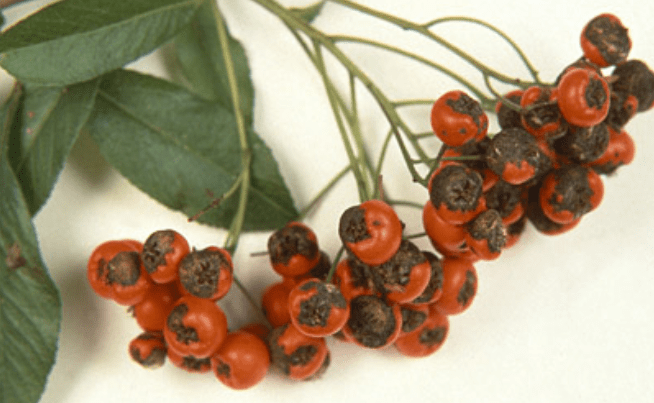
B. Winter Protection
To protect your orange berry bushes during the winter, it’s important to provide them with adequate insulation and protection from freezing temperatures. One way to do this is by applying a layer of mulch around the base of the bushes to help regulate soil temperature and prevent frost damage. Additionally, you can cover the bushes with frost cloths or burlap to shield them from harsh winter weather. It’s also important to prune the bushes in late fall to remove any dead or diseased branches and promote healthy growth. By taking these steps, you can help your orange berry bushes survive the winter and thrive in the coming growing season.
Enhancing Berry Production
A. Pollination
To enhance berry production, it’s important to ensure proper pollination of your orange berry bushes. This can be achieved by attracting pollinators such as bees, butterflies, and other insects to your garden. You can do this by planting flowers that attract pollinators, such as lavender, bee balm, and coneflowers. Additionally, avoid using pesticides that may harm or deter pollinators from visiting your garden. By encouraging pollination, you can increase the yield and quality of your orange berries.
B. Seasonal Care
In order to enhance berry production, it’s important to provide seasonal care to your orange berry bushes. Proper pruning in the winter months can help promote new growth and increase fruit production. Additionally, make sure to provide adequate water and nutrients during the growing season to support healthy berry development. Applying mulch around the base of the plants can help retain moisture and protect the roots during hot, dry weather. By providing seasonal care to your orange berry bushes, you can help ensure a bountiful harvest of delicious and high-quality berries.
C. Harvesting Berries
When it comes to harvesting berries, it’s important to wait until they are fully ripe before picking. This ensures that they are at their peak flavor and sweetness. To prevent any damage to the delicate berries, it’s best to pick them carefully by hand. Be sure to check for any signs of rot or pests before harvesting, as these can affect the quality of the berries. Once picked, store the berries in a cool place to maintain their freshness. With proper harvesting techniques, you can enjoy the delicious and nutritious fruits of your labor.
Creative Landscaping Ideas
A. Incorporating Orange Berry Bushes into Your Garden Design
When it comes to landscaping, incorporating orange berry bushes into your garden design can add a pop of color and texture to your outdoor space. These vibrant bushes not only provide visual interest, but they also produce edible berries that can be enjoyed by both humans and wildlife. When choosing a location for your orange berry bushes, be sure to consider their sunlight and soil requirements to ensure they thrive. You can also pair them with other plants and flowers to create a visually appealing and functional garden design. With a little creativity, orange berry bushes can be a beautiful and practical addition to your landscape.
B. Container Gardening
Container gardening is a great option for those with limited outdoor space or for anyone looking to add a touch of greenery to their patio, balcony, or deck. With container gardening, you can grow a variety of plants, flowers, and herbs in pots, planters, and other containers, allowing you to create beautiful and versatile displays. When choosing containers for your garden, be sure to consider the size and material of the pot, as well as drainage and watering needs for the plants you want to grow. Container gardening also provides flexibility, as you can easily move your plants around to find the best sunlight and temperature conditions. Whether you’re a seasoned gardener or new to gardening, container gardening offers endless opportunities for creativity and personalization in your outdoor space.
C. Wildlife Gardens
Wildlife gardens are designed to attract and support a diverse range of animal species, including birds, butterflies, bees, and other beneficial insects. By incorporating native plants, water sources, and shelter, wildlife gardens provide a habitat for these creatures and help to promote biodiversity in your local ecosystem. When creating a wildlife garden, consider planting a variety of flowers, shrubs, and trees that provide food and shelter for different types of wildlife. You can also incorporate bird feeders, bird baths, and insect hotels to enhance the habitat. By gardening with wildlife in mind, you can enjoy the beauty of nature while also contributing to the conservation of local wildlife populations. Wildlife gardens are a wonderful way to connect with the natural world and create a more sustainable and balanced environment in your own backyard.
In conclusion, planting and caring for orange berries on a bush can be a rewarding experience, but it requires attention to detail and proper care. Make sure to choose a sunny location with well-drained soil, and regularly water and prune your bushes to promote healthy growth. With the right care and attention, you can enjoy a bountiful harvest of delicious orange berries. If you want to learn more about growing and caring for orange berry bushes, check out our comprehensive guide on our website.
Frequently Asked Questions (FAQs)
Orange berries on a bush are typically found on plants such as the Pyracantha or Firethorn shrub. These berries are known for their vibrant color and are often used for ornamental purposes in landscaping.
To plant an orange berry bush, choose a location with well-draining soil and full sunlight. Dig a hole twice as wide and deep as the root ball, place the plant in the hole, and backfill with soil. Water the plant thoroughly after planting.
Orange berry bushes require regular watering, especially during dry periods. Pruning is also important to maintain the shape and size of the bush, as well as to promote healthy growth and berry production. Fertilize the plant in the spring to encourage new growth and berry development.
While the berries are not toxic, they are not typically consumed by humans due to their bitter taste. However, they can be a valuable food source for birds and wildlife in the area.
Some varieties of orange berry bushes, particularly the Pyracantha, can be invasive in certain regions. It’s important to research the specific variety and consider the potential impact on the local ecosystem before planting.
Yes, orange berry bushes are known to attract birds and other wildlife, making them a popular choice for creating wildlife-friendly landscapes.
Orange berry bushes are generally low-maintenance and easy to grow, making them a great choice for beginner gardeners or those looking to add color and interest to their outdoor space.
Yes, orange berry bushes can be grown in containers, especially dwarf varieties. Just ensure that the container has good drainage and provide regular care and maintenance to keep the plant healthy.
